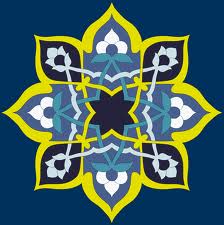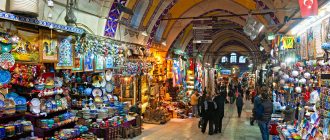Want to learn more about Turkish art patterns? Read on for interesting facts and info about the unique art patterns developed by the Turks…
Turkish art patterns are strikingly different from what you would normally find in Western art. The difference sprouts from the deep religious beliefs of the Turks that dictated certain elements of their art forms. Along with the prohibition of depicting human figures, Turkish art patterns display perfect balance of color and line and a resounding harmony and geometry.
Turkish calligraphic art was of utmost importance during the Ottoman rule. Not only was calligraphy used to record important political, historical and economic records; it was even used for writing religious scripts. With the passage of time Turkish calligraphy became more ornate and they used calligraphic texts to create extremely intricate and complex designs. These designs can be witnessed today inside mosques all around Turkey and even on prayer rugs and cover designs of religious books.
Turkish calligraphers would actually take verses from the Holy book of the Muslims and compose them in the form of rhythmic patterns. These patterns could be seen painted on pillars and panels in mosques and were most commonly used as border designs on various other mediums.
Another improvisational art form developed by the Turks utilized a mixture of vegetable and mineral dyes with gum and gall fluid from cattle. They would lay down marbled paper on this mixture to create unique patterns that were literally impossible to replicate. Ottoman panels and miniatures would be made using this technique. Even the inside covers and flyleaves of books would be decorated using this technique. The art of marbling is still practiced in Turkey today.
The Ottomans were very advanced in their silk making techniques. Not only did they have the finest silk in the world, they even used different techniques to paint various patterns on silk using it as a canvas. The salt-dye technique invented by the Ottomans helped them to create unique designs that gained popularity all over the world.
Turkish art patterns can best be witnessed in the art of embroidery as practiced by the Ottomans. It is believed that the art of embroidery actually made its way to the West at the hands of Turkic nomads. Turkish embroidery was not restricted to clothing and bedding fabrics only. Rather they would create complex patterns on army tents, banners, pavilions, holsters and saddles. The artisans would create battle scenes using traditional techniques. Many fine examples of Turkish embroidery patterns can be seen in the Museum in Harbiye, Istanbul.
Embroidery was also used to adorn religious hangings that were put up in mosques, prayer carpets and cases made out of fabric and wood for Koran. Floral patterns were particularly popular for these products in delicate colors contrasted by silver and gold. A number of every day use items such as towels, bed sheets and veils were also decorated in this manner.
The Royal Ottoman Court was full of silk brocades and velvets that would be elaborately decorated with intricate embroidery. Tulip designs were particularly prominent in the embroidery patterns used in the royal court.





